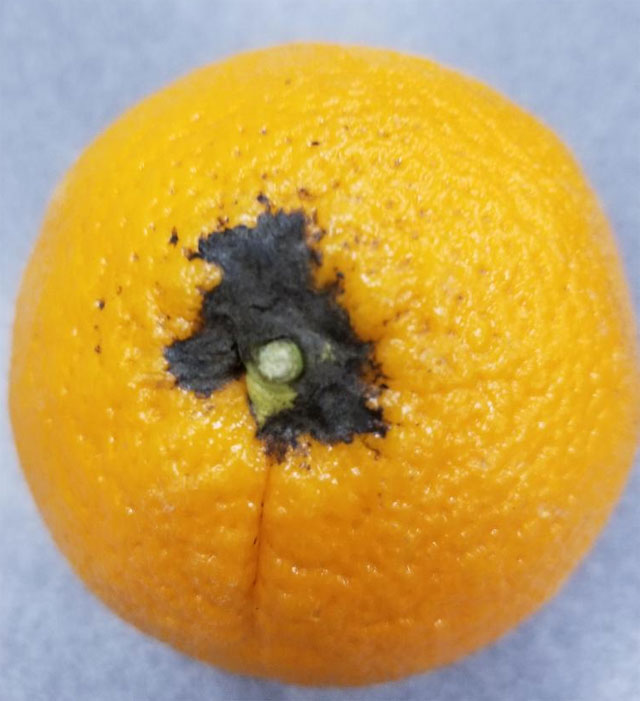At a recent training class we inspected oranges from Chile. When popping the lids everyone was surprised to see a black discoloration affecting the majority of the oranges within the carton.

The defect we found is called Sooty Mold. This is caused by a fungus that adheres to excretions of the white fly and other insects. It may occur as light deposits scattered over the fruit surface or as heavily concentrated areas at the stem end. The mold can be easily scraped off with a fingernail or knife. Normal washing procedures do not entirely remove fungus deposits.
The U.S. Grade Standard does not mention this defect specifically, so in that case the scoring guideline would be to score the defect when you feel it materially affects the appearance. Many in the class first thought the black discoloration was most likely dirt, as it easily scraped off….but if oranges grow in tree how would they become in contact with dirt? When they learned this was actually a fungus everyone agreed the sooty mold they were seeing would and should be scored as a defect, when obvious and materially affecting the appearance.
Although the U.S. Grade offer no scoring guideline, the USDA’s Inspection Instructions do state a scoring guideline. The USDA would not score this is a defect unless the affected area was greater than a circle aggregating 5/8 inch.
Looking at the image above, this would be scored as a defect, damage by sooty mold, a quality defect. Although the oranges with sooty mold were in excess of 50%, based on the USDA scoring guideline our percentage of oranges found to be damage by sooty mold were approximately 10%.

3 Comments on “Oranges- Sooty Mold”
The USDA does have a scoring guideline for sooty mold it is as follows. Injury when more than slightly affecting the appearance of the fruit. Damage is scored when more than 5/8 of a inch, Serious Damage when more than 3/4 of a inch. Scoring guide is based off a 2-7/8 inch diameter orange you will have to allow greater/less areas of mold for smaller or larger fruit depending on your situation.
Brian, thanks for your comment. Yes, you are correct the USDA does have a scoring guideline but the US Grade Standards do not. Whenever the USDA’s Inspection Instructions offer a scoring guideline while the Grade Standard does not that means a person in USDA’s HQ makes up a scoring guideline, with zero input from the Industry itself. Inspection Instruction guidelines can be changed at any time, even immediately, while Grade Standards have to undergo a review and comment process. My point was it may be time for someone in the USDA look into this arbitrary scoring guideline, as the class of twenty industry attendees and myself felt the scoring guideline is very lenient.
If the defect is due to fungus, will it not affect the entire fruit? Why on the localized area? Will the fruit become inedible?